Architects of the Near Future
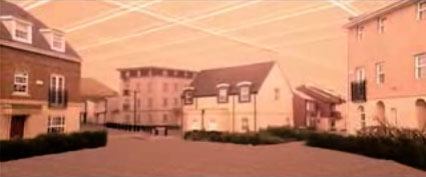
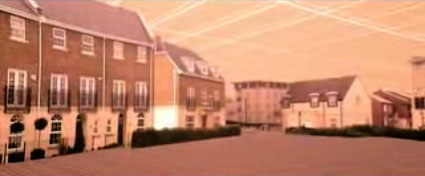
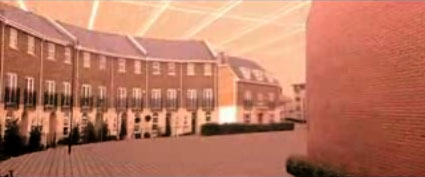 [Images: From a short film by Michael Aling, produced for Nic Clear's Unit 15 at the Bartlett].
[Images: From a short film by Michael Aling, produced for Nic Clear's Unit 15 at the Bartlett].A few days ago, Ballardian posted a long, well-timed, and very interesting interview with Nic Clear, from London's Bartlett School of Architecture. I've long been a fan of Clear's work with his students; I wrote a short article about him for Dwell last spring (see image, below), and Clear organized last month's Science Fiction and Architecture panel in London.
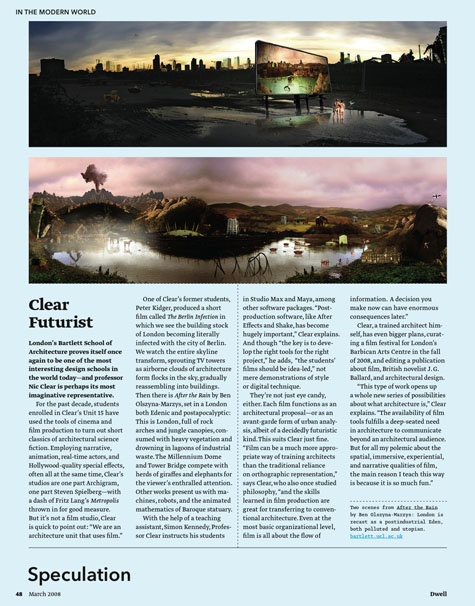 [Image: A short article about Nic Clear from the March 2008 issue of Dwell].
[Image: A short article about Nic Clear from the March 2008 issue of Dwell].Huge sections of the interview, in which they discuss the value of extra-architectural ideas in helping to shape the "near future" of spatial design, are worth quoting in full; but I'll stick to a few specific moments here, and you can then go read the rest.
What I like about Clear, though, is that he's 100% comfortable with – and seemingly relentless about pursuing – architecture not as a system of codified ornament or as a closed universe of citational conformity open only to grad students, but as a resource for ideas of every kind, whether or not they apply to your own local building codes or will ever lead to an act of construction.
Want to write a novel? A screenplay? An essay about landscape and climate change? Want to direct a music video? Start a blog? Architecture offers fuel – and amazing visuals – for all of these things.
The field becomes almost infinitely more exciting when you realize that architectural projects, by definition, entail the reimagination of how humans might inhabit the earth – how they organize themselves spatially and give shape to their everyday lives. Architecture is, within mere instants of discussing any idea or project, real or imagined, something with anthropological, economic, legal, libidinal, seismic, and even planetary implications.
In fact, if architecture can be viewed as the material alteration of the earth's surface, then it is not a stretch to say that architecture has astronomical consequences: it can alter the very shape of a planet.
Little wonder, then, if we do decide to go in this direction, that there appears to be a growing cross-over of interests between architecture and science fiction – as in, for instance, the work produced by Nic Clear's Unit 15.
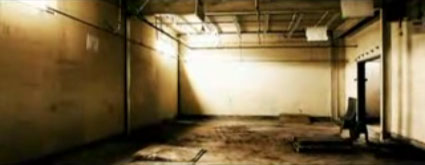
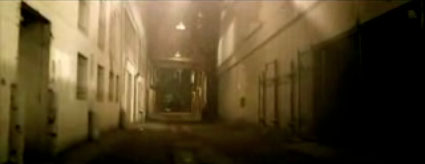
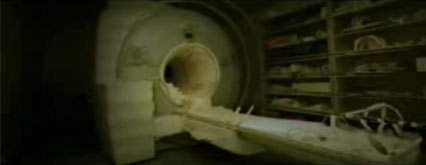 [Images: From a short film by Dan Farmer, a tour through a landscape of abandoned hospital equipment, produced for Nic Clear's Unit 15 at the Bartlett].
[Images: From a short film by Dan Farmer, a tour through a landscape of abandoned hospital equipment, produced for Nic Clear's Unit 15 at the Bartlett].In any case, it shouldn't be surprising that Ballardian would then focus specifically on the architectural value of J.G. Ballard.
When asked whether Ballard is a growing influence on today's practitioners, Clear answers:
- I’m not sure how many architects are being influenced by Ballard in their work, especially within ‘commercial’ architecture – maybe the forthcoming recession will make architects aware of the Ballardian possibilities of architecture. Within academia and architectural criticism, if such a thing still exists, there is a general disdain for ‘popular’ fiction – writing on, and about, architecture is still very elitist – and I have met quite a bit of resistance when discussing Ballard as a serious subject. However, I think that there is a desire to face up to a future that deals with a system in crisis, which Ballard articulates so brilliantly. I was recently reading Mike Davis’s breathtaking collection of essays, Dead Cities, and was constantly thinking ‘this is so Ballardian.’ Also, writers like Frederic Jameson and Jean Baudrillard, who have been influenced by Ballard, are still incredibly important and influential. Obviously Ballard’s early identification of global environmental issues also makes him incredibly pertinent to many people. However Ballard does not give easy, or even any answers and this puts off many people. Given the current economic and environmental conditions, he seems more prescient than ever, not simply because of the situations he describes, but because he offers a mindset for dealing with these issues.
Finally – because you can simply read the interview itself in full – Clear sums it all up: "We have to stop thinking about architecture simply in terms of building buildings – that’s why I am so interested in looking at other models and disciplines to draw inspiration from."





Comments are moderated.
If it's not spam, it will appear here shortly!
This reminds me of the importance of architecture in Kim Stanley Robinson's The Gold Coast and the influence it has on the mental sanity of the novel's main character. There are many interviews in which Robison elaborates on the interdependency of political/economic systems and architecture.
Kerstin, BLDGBLOG posted its own interview with Kim Stanley Robinson last year - and we do, indeed, discuss architecture! Check it out if you get a chance.
It's interesting seeing Bruce Sterling picking up on your architectonic sci-fi musings; it's like coming full-circle...
Soon after learning about Clear and Unit 15 from this post, I watched the Stewart Brand's How Buildings Learn documentary and was struck very strongly by the contrast. I've got a post up examining the contrast between the two ways of thinking and it might be able to be resolved by learning something from experimental music. Thanks for the inspiration!
Post a Comment